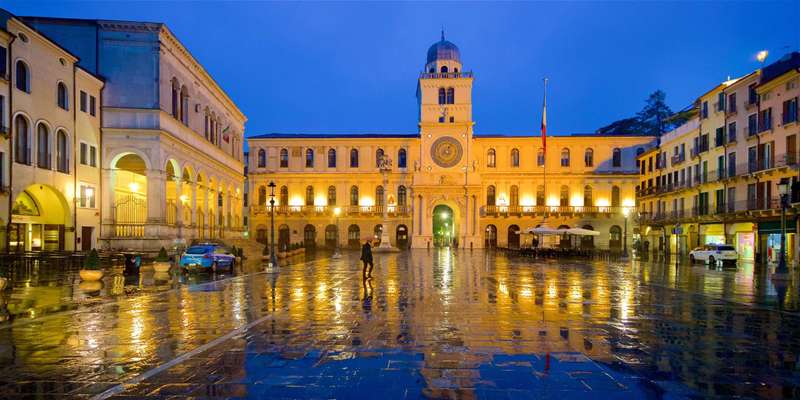- Home
- Useful Tips
- Accessible routes through...
Navigating Padua's historic center with a stroller can quickly turn a dreamy Italian getaway into a logistical nightmare. Cobblestone streets dating back to medieval times, unexpected steps, and narrow alleys force 68% of visiting families to alter their sightseeing plans according to recent tourism surveys. Parents report abandoning must-see landmarks like Palazzo della Ragione when faced with inaccessible routes, while others waste precious vacation time backtracking to find suitable pathways. The frustration mounts when guidebooks and maps fail to distinguish between theoretically 'pedestrian-friendly' routes and truly stroller-accessible paths. This leaves families choosing between missing cultural highlights or risking unsafe stroller maneuvers across uneven surfaces.


Mapping the truly accessible routes between Padua's iconic squares
The key to stress-free strolling lies in understanding Padua's three main accessible corridors. From Prato della Valle – Europe's largest elliptical square with its completely flat perimeter – a smooth flagstone path leads northeast past the Basilica of Saint Anthony. This vital artery remains level until the intersection with Via Umberto I, where a nearly invisible ramp eases access toward Piazza delle Erbe. Westbound travelers should follow the specially paved section of Via Roma, which bypasses three problematic steps near Piazza dei Signori. Locals know the marble markers embedded near Santa Caterina's Gate indicate barrier-free routes established during recent urban renewals. These pathways maintain consistent widths of at least 90cm, accommodating all standard stroller models without requiring awkward maneuvers around medieval wellheads or protruding building foundations.
Secret ramps and elevator access only residents usually know
Several crucial accessibility features escape even detailed city maps. The 14th-century Palazzo Bo conceals a modern elevator near its anatomy theater entrance, allowing stroller access to the historic courtyard where Galileo once lectured. Near the Scrovegni Chapel, a disguised ramp behind the Eremitani Museum connects to Via degli Zabarella without encountering the notorious three-step barrier that frustrates most visitors. Market vendors routinely suggest cutting through the internal courtyard of Palazzo Moroni, where a restored goods-loading ramp from the 1600s now serves as the smoothest approach to Padua's cathedral. These local workarounds can save 20+ minutes of detours compared to following main thoroughfares. Evening strolls become particularly rewarding when using the illuminated ramp system beneath Piazza Capitaniato, which provides step-free access to Padua's best gelato shops during peak hours.
Stroller-friendly attractions with hassle-free entry points
Prioritizing venues with dedicated accessibility makes itinerary planning significantly easier. The Orto Botanico, UNESCO's oldest academic garden, offers completely flat pathways through its medicinal plant collections and rare tree specimens. Their staff keeps collapsible strollers available for loan near the 16th-century gates. Padua's famous Cappella degli Scrovegni provides priority stroller access through its climate-controlled side entrance when requested during ticket purchase. Families appreciate the Pediatric Museum's thoughtful design, where every exhibit room connects via ramps modeled after hospital accessibility standards. Even historic Caffè Pedrocchi accommodates strollers through its ground-level Liberty-style annex, where waiters gladly rearrange antique furniture to create safe spaces for dozing infants. These venues eliminate the all-too-common disappointment of arriving at landmarks only to discover insurmountable entry barriers.
Timing strategies to avoid crowded narrow passages
Strategic scheduling transforms challenging routes into pleasant walks. The alley connecting Piazza della Frutta to Via San Francesco becomes impassably narrow when the morning market packs up around 12:30 PM, but offers ample stroller space if traversed before 10 AM. Locals swear by the post-lunch lull (2-3:30 PM) for stress-free access to the Baptistery, when tourist groups thin out near the stepped approach. Sunday mornings present ideal conditions along Via Dante, where lowered bollards allow strollers to use the extra-wide pedestrian zone normally reserved for evening passeggiate. Water-filled potholes that complicate stroller movement after rains typically dry by mid-morning on sunny days. Savvy parents coordinate with Padua's university class schedules – pathways around Palazzo Bo clear dramatically during the 11 AM lecture hour, creating perfect windows to access nearby sights with minimal pedestrian traffic.



